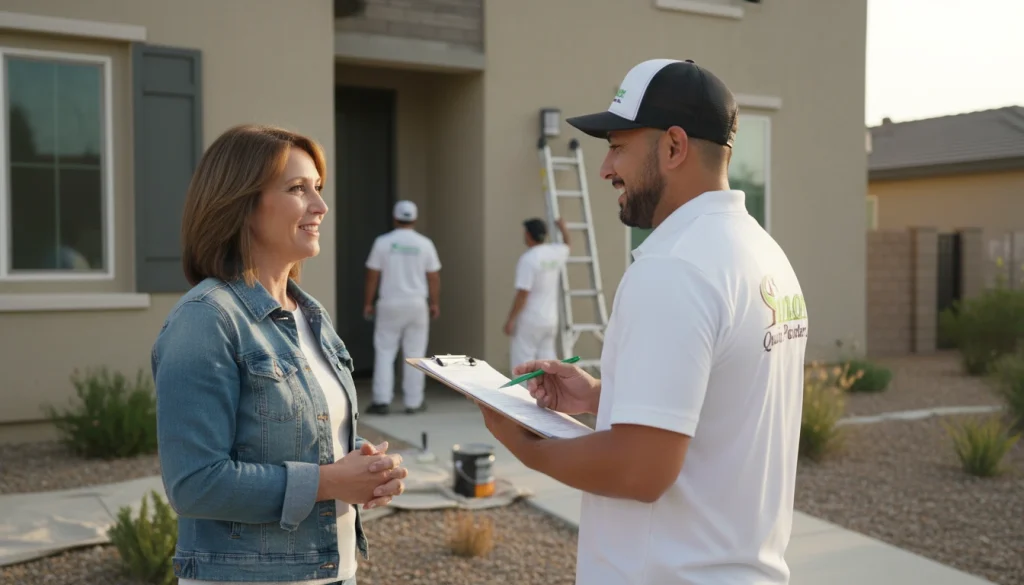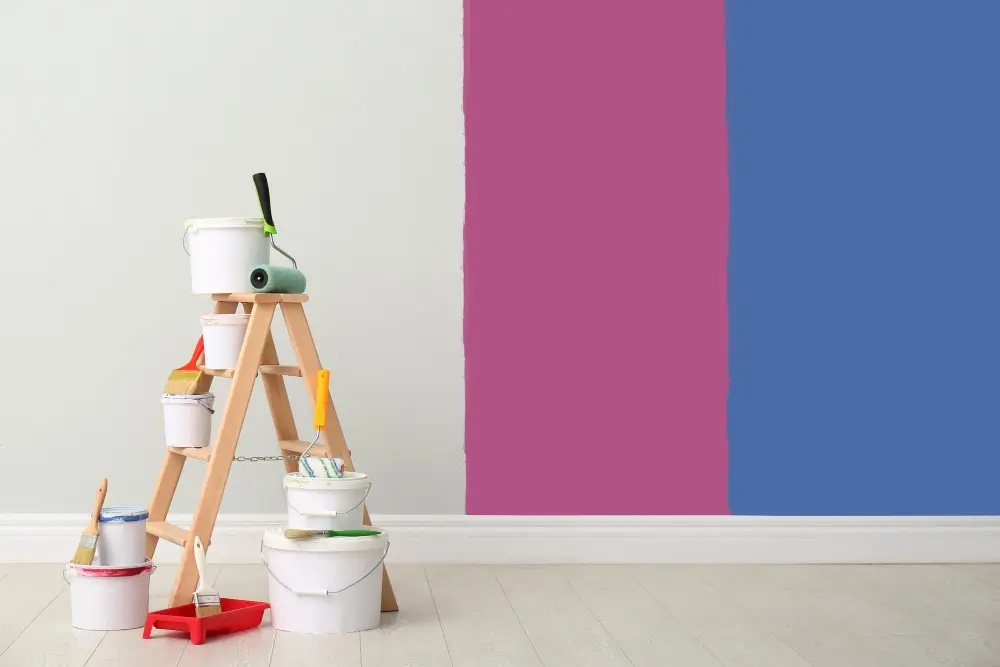When it comes to painting your home, many people assume paint is just paint. However, the formulas designed for interior use versus exterior use serve completely different purposes. Using the wrong type in the wrong place can lead to peeling, fading, or even structural damage over time. In this guide, we’ll break down the key differences between interior and exterior paint, why they matter, and how to make the right choice for your project.
The Core Differences Between Interior and Exterior Paint
Paint is more than just color — it’s chemistry. Each type of paint is formulated for specific conditions.
Durability and Weather Resistance
- Exterior paint is designed to withstand sunlight, rain, wind, and temperature fluctuations.
- It contains additives that resist mildew, mold, and fading caused by UV rays.
- Interior paint, on the other hand, focuses on durability against scuffs, stains, and cleaning, not weather exposure.
VOC Levels and Safety
- Interior paint is formulated with lower levels of volatile organic compounds (VOCs) to keep indoor air safe and breathable.
- Exterior paint often contains higher VOCs and stronger chemicals, which is why it should never be used inside.
Flexibility and Adhesion
- Exterior paint has resins that allow it to expand and contract with changing temperatures and humidity.
- Interior paint offers a smoother finish but does not have the elasticity needed to survive outdoors.
What Happens if You Use the Wrong Paint?
Many homeowners try to cut corners, but mismatching paint types almost always leads to problems.
Interior Paint Used Outdoors
- Will quickly fade, crack, and peel.
- Offers no protection against moisture, which can lead to rot or structural issues.
Exterior Paint Used Indoors
- Can release unsafe fumes and odors.
- Has a rougher finish that isn’t ideal for walls, trim, or ceilings.
- May not bond correctly to indoor surfaces.
Choosing the Right Paint for Each Space
Interior Applications
Best for:
- Living rooms, bedrooms, kitchens, and bathrooms
- Trim, ceilings, and accent walls
- Areas where low odor and smooth finishes matter
Look for:
- Washable finishes like satin or semi-gloss
- Low-VOC or zero-VOC options for healthier indoor air
Exterior Applications
Best for:
- Siding, stucco, wood, or masonry
- Decks, fences, and doors exposed to weather
- Any surface requiring UV and moisture resistance
- Paints with built-in primers for added adhesion
- Mildew-resistant additives if your area is humid
How to Ensure Long-Lasting Results
Even the right paint won’t perform well without proper prep.
- Clean surfaces thoroughly before painting.
- Use primer where needed for adhesion.
- Apply multiple thin coats instead of one thick coat.
- Schedule exterior painting during mild, dry weather for the best results.
Final Thoughts: The Right Paint Protects Your Investment
The difference between interior and exterior paint goes beyond the label. Interior paint is designed for beauty and easy maintenance inside the home, while exterior paint is engineered to stand up to harsh elements outdoors. Choosing the right type not only enhances appearance but also protects your property and prevents costly repairs.
If you’re unsure which paint is right for your project, consulting with a professional painter can save you time, money, and frustration.



